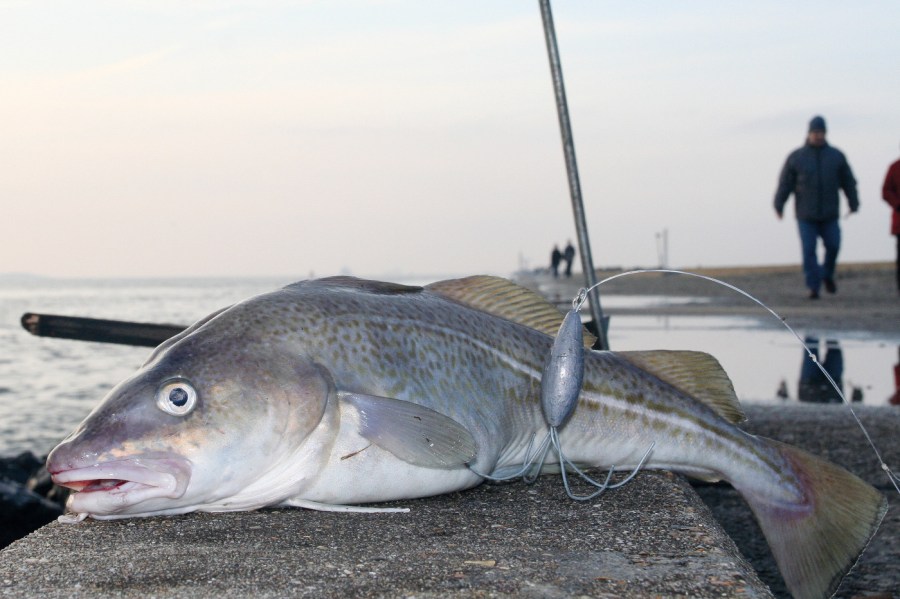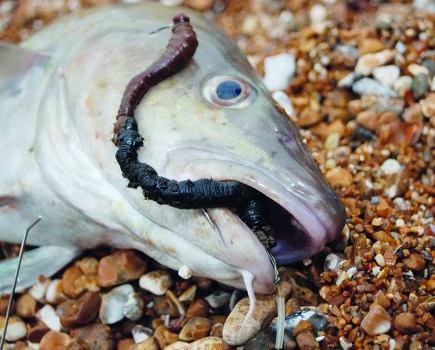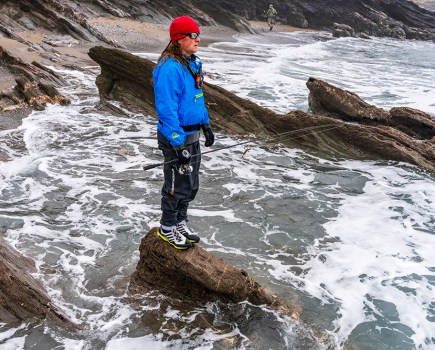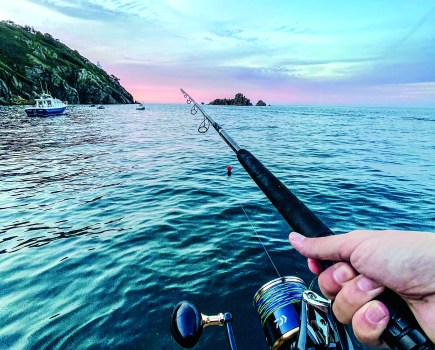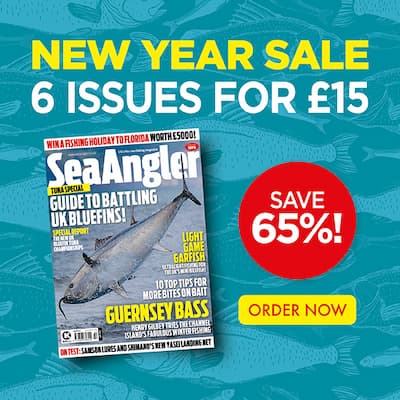Martijn Dekker discusses rigs, hook choice and leads suitable for those beginning their journey into sea angling
When beginning sea angling you will want to start out with a simple three hook boom rig: good, super versatile and sold just about anywhere. But there is more; simple adjustments can often be very effective and sometimes even a must. The biggest difference is in the material that the booms are made of, plastic or metal, and the length of the boom and its hook lines. When the current is weak the fish will very delicately forage, so long booms with a matching bait line are your best bet. You will give the fish just a little more room to move before they discover the hook, which is already further in at that point and it will be too late to spit out again.
However, if you were to use this in a strong current it will actually work in the opposite way. The booms with their hook lines will catch the strong current and the bait will start moving too much. In this case it is better to use shorter steel booms with a short hook line made of a thicker material. This will be much more stable in the water and the fish will properly snap up the bait in a strong current anyway. The thicker the steel, the better it stays on the bottom.
I do not recommend using weighted booms when fishing from the shore. It will get tangled faster and it will not cast as far. If you want to be sure that all your hooks are on the bottom then fish up tide, and more on this later.
The same guidelines apply for rigs without booms. The thicker and shorter hook lines are, the more stable the bait will lie. Lower and thinner means more mobile. Here, too, you will make the same choices when to use which hook line. Long, thin hook lines when the current is weak, short thick lines when the current is stronger. Of course, there is nothing wrong with ignoring the theory every now and then and just giving it a whirl, you might be surprised.
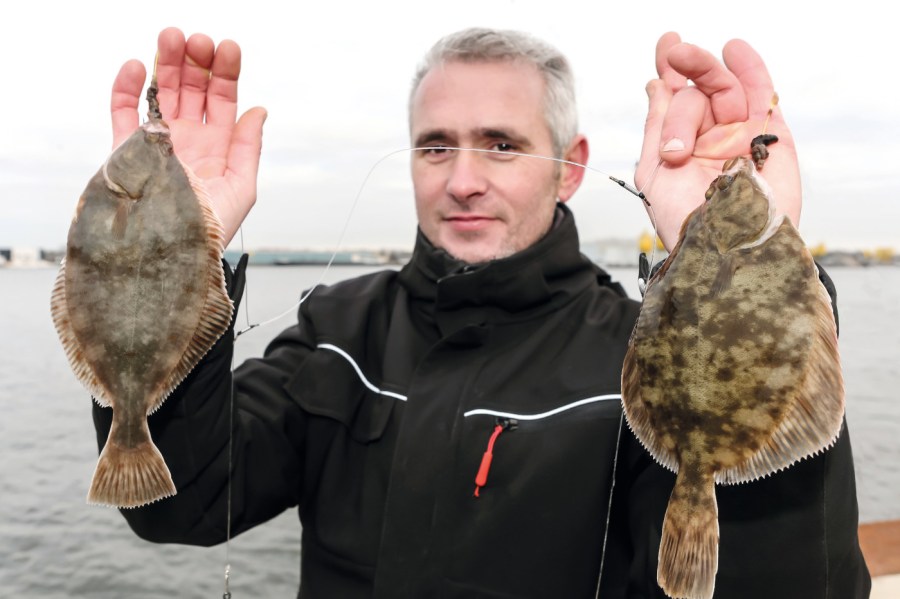
Flounder caught using a multi-hook wire boom rig
I use one-hook rigs when fishing for larger species like sharks, bass and rays. When you are specifically fishing for these fish you do not want to run the risk of having two fish hanging off your rig at the same time. That is asking for trouble. When offering your bait with a single hook you have the option to either offer it sliding or fixed. Fixed is best used in a weak or medium current. When setting up this rig you can use the so-called urfe. This is a metal bar with a lead-clip, a swivel for the hook line and a swivel to attach to the main line. Various brands offer an urfe in their range but making one yourself is also an option.
The bait line should be 120cm to 150cm in length. When fishing with the urfe the hook bait can be snapped up freely and only when the line stretches will the fish be hooked. The fish will immediately make a run for it and pull the lead along, there is no need to strike. If the fish swims away from you, you will register a very strong bite. If it comes towards you your linewill go slack, so don’t hesitate! The biggest disadvantage of this rig is that when your main line snaps the fish will keep swimming around with the lead. With a sliding system you are able to fish a bit more subtly. If you use a slider then use a leader with the same length as described above.
The fish can also freely snap up the hook line and still has freedom of movement. You will notice this on your rod tip. It is very exciting, but you should not strike immediately. It is better to wait until your rod tip curves completely and only then should you remove your rod from its support and land it. The sliding rig can be used on all types of water and in every circumstance. When there is a moderate to strong current you can also use a pulley rig, which works extremely well.
This is a rig which is semi-sliding. This rig is not so much meant to slide when a fish bites but rather to slide when a big fish has hooked itself. When the bait is taken you will immediately notice this on your rod tip and often the hooked fish will make a mad dash for it. When the line is pulled tight the lead will move well above the fish and away from the seabed, which is ideal when there are many obstacles in the vicinity.
The hook line can consist of a number of materials, but never braid. An ordinary transparent monofilament line will do just fine. Personally I prefer fluorocarbon, not because it is less visible under water but purely because of its higher resistance to wear. Another even more durable material is Amnesia, which is not only more durable but also more rigid. This is available in many colours and diameters. I only use two colours myself as I am not convinced that all these colours actually yield more fish.
I do believe in the difference between transparent, yellow and red, so having these in your tackle box is more than enough. The diameter of the hook line depends on the species you are fishing for. Multi-hook rigs are mainly meant for fishing for species such as whiting, dabs and flounder.
You can easily catch these with a hook line line diameter of about 30/00. For the single-hook rigs it is better to use bait lines of 40/00 to 60/00. For Amnesia the tensile strength is stated in kilos, if you opt for thinner lines then use 5.6kg, for the thickest lines use 9.1kg. If you want to fish with even thicker lines in a single hook setup then choose 60/00 nylon or fluorocarbon, which is much easier to tie and less rigid, which improves bait presentation.
HOOK CHOICE
Hooks are often underestimated but the differences between them are huge. Many hooks are available on the market, each with their own characteristics. Again, we will limit ourselves to a modest selection. The biggest difference, and in my opinion the most important one at that, is a wide gape or normal hook. A normal hook consist of, as most anglers know, a straight shank, a bend and the hook point all in a straight line. In most cases this is your best choice.
On a set hook the hook is bent outwards slightly and the gape, the distance between the hook point and the shank, is wider. These often penetrate deeper into the mouth so that the hooked fish has little chance of getting loose. The disadvantage of this hook is that it is less easy to work in and often too big for a small mouth.
Do not switch hooks unless you have a real reason to do so. If you are not registering any bites then don’t not change hooks but look for another solution. Am I at a good spot? Am I using the right rig or should I change my bait or the bait presentation? These are all options. If you are registering bites but the fish are not getting hooked then it is a good idea to change the hook to a different model, larger, smaller, it can make a huge difference! A longer or slightly shorter hook line will also help. The easiest and quickest way to find this out is to grab a rig with long hook lines, two or three different hooks and various lengths of hook lines. Three possibilities on one rig and you will soon find out what works.
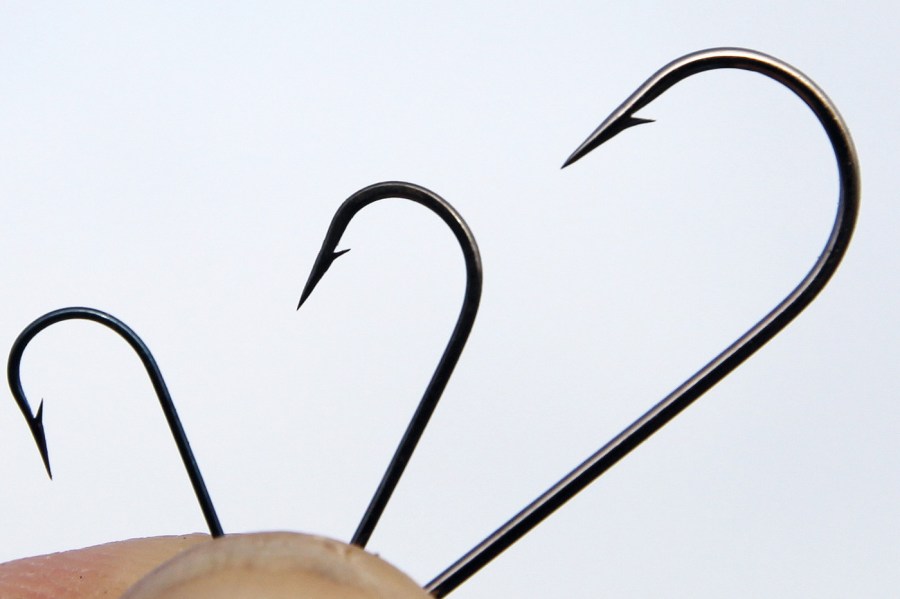
DISGORGERS
Of course, a fish will swallow the hook too deeply at times. Do not fiddle around with a large pair of pliers trying to unhook the fish. Instead use a small pair of pliers or even better a disgorger used in trout fishing. These have a large disgorger on one end and a small one on the other, and is easy to use. A chopstick from your last Chinese meal actually works best but that does take some practice. If you prefer to use a pair of pliers after all then be careful not to damage the hook line just above the hook.
LEADS
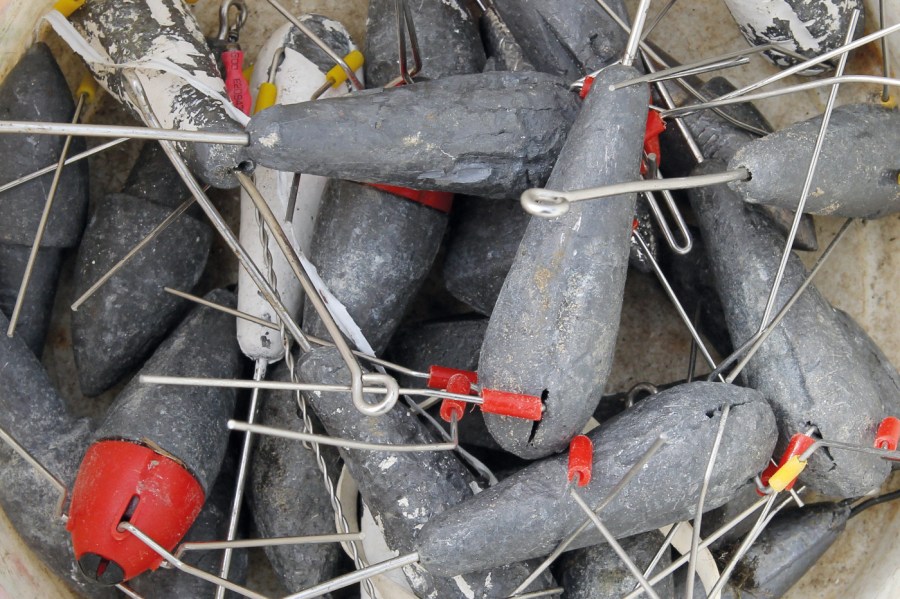
Just like rigs there are many types of lead and lead substitutes. Lead-free casting weights are getting more popular but they have not really been adopted in sea fishing yet. Everyone has their own reasons for still fishing with lead. But the fact is that in a few years’ time we will no longer be allowed to fish with lead, so it could be a good idea to start exploring lead-free alternatives now.
We opt for two types of casting weights: with or without grips. Casting weights with grip wires are probably the safest bet for a novice sea angler but be sure to also bring a few leads without grip wires as well. Leads with grips stay where you cast them and can be used when there is a current. The grip wires dig themselves into the sandy bottom so that the lead stays in place even when there is a current. This way your rig will also stay put. There are two types of leads with anchors: leads with fixed wires (leave those at home and only use on the boat) and leads with grips that ‘break’. These grips fold in when you build up tension on the line. Ideal for fishing from the shore. As long as the lead is dug in, the grips will stay in place but if you build up tension on the line the grips snap loose and you can reel your line in without any problem. Remember to snap the grip wires back to the right position again before casting! What most sea anglers do not know is that you can upgrade these grip leads by wrapping some elastic around the wires of your lead. By doing this you prevent them from breaking free and can therefore fish a lot lighter. An added advantage is that you can easily pull the elastic loose when your grip wires are stuck on the seabed, after which they will fold back as normal. If you opt for different weights between 150 and 200 grams, you will usually be fine. Most beach rods can handle this but if you’re going to fish heavier then check whether your rod can handle it.
If you fish close to the shore or around the turn of the tide with little current then try plain leads without grip wires. The leads with a pyramid shape are great. They cast well and stay in place nicely. It is not a problem if your lead moves around a bit, it can even influence your catch positively by covering a larger area, as long as it doesn’t move too quickly. Fish such as flounder and bass are not averse to a bait that moves around, quite the contrary.
Always choose leads that are as light as possible. When the current is strong you fish with heavier lead than when the current is weak. This makes it easier to cast and reel the line back in. Of course, it is always possible that your lead will take a walk due to the increasing current or weed on the line. If this happens reel in immediately because before you know it your lead will drift into an obstacle and get stuck.

